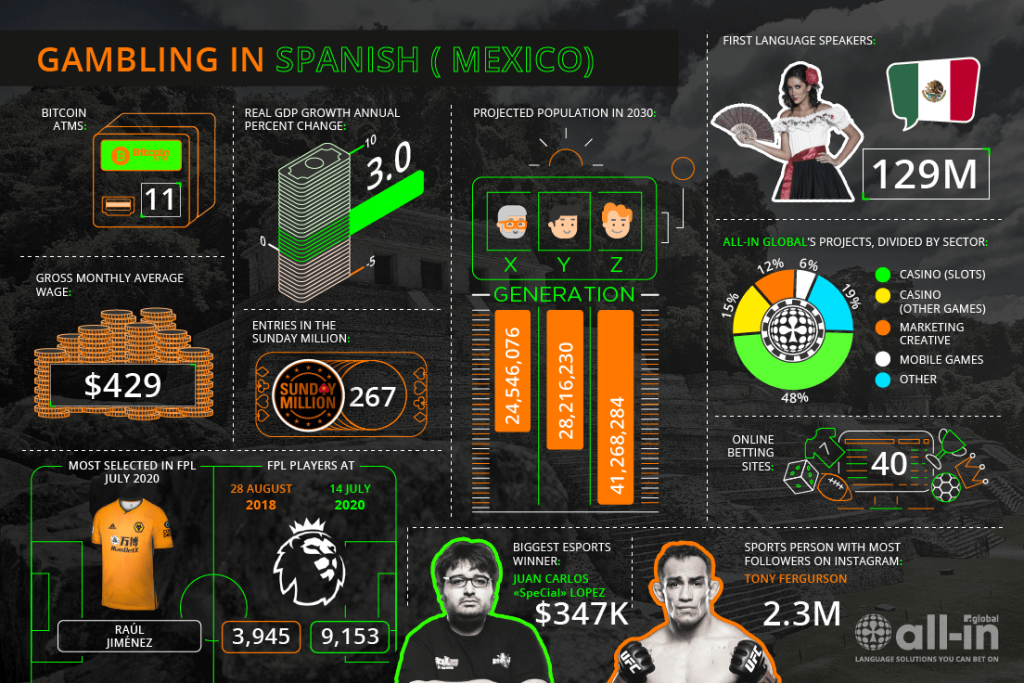Back in 1996 i was learning computer programing, it was interesting to me because I had a little background in electronics. So to practice what I have learned, I was looking for an idea to put that basic knowledge to work.
I came across a Mexican Loteria game that made me remember how we used to play Loteria in the Mexican street festivals and fairs with my Grandmother Martha when I was little. I'll come back to share more memories of my beautiful Grandmother later.
When the operating system Windows 95 was released it came with some music videos, who would not remember that song Good Times by Edie Brickell.
Then for windows 95 Microsoft released a Game SDK with a library called DirectPlay witch supposed to connect gamers in a network so the days of playing alone were going to be gone some day. I used DirectPlay to create the first Loteria Mexicana Game for internet, check the picture above and see how the program looked after I finished. The program had 7 buttons, All with Spanish labels like Terminar (Exit), Conectar(Connect), Unirse(Joint), Jugar(Play). The other 3 buttons where used to select the playing board in Spanish called Tabla. It had a panel to display all the current gamers, a message panel and a message input.
To play the user first would look for a group to play pressing the Connect button, then will hit the Joint button, choose a playing board and the group has to agree to who was going to be the Loteria Caller. To synchronize all player only one person could be the caller while they were playing so by pressing the play button that person would become the caller and all the other players would get the called card on the center of the window while they chat and click on the playing board if the called card matches a card in the playing board. When anyone got all its playing board cards marked the program would display a message to all players saying who was the winner. Buenas LOTERIA!!!!...

I exchange messages with people to test the program and everything looked good so I released it free of charge on a website to promote the Loteria Mexicana game that I had good memories playing with my grandmother.
Here is a screenshot of one of the first website that made for the Loteria, this probably was the third one I made for it:
Still can be viewed at: http://members.nbci.com:80/osito29/
By year 2000 everybody was learning Java to create games and interactive content for the web so I gave it a try to learn a bit of it and I made a Loteria Java Applet. It was placed in this website witch still exist:
- Loteria arrived in Mexico the last half of the 18th century. It began as a Spanish colonial card game played for amusement by the social elite, but was.
- Spanish Word BINGO is a fun educational game for kids to practice Spanish vocabulary words. There are over 200 common Spanish words grouped into 11 different categories. Players can select from as few as two categories or they can select all of them! Players can also choose between Spanish to English or English to Spanish!
Nov 23, 2018 - Explore Ruby Jimenez's board 'MEXICAN BINGO' on Pinterest. See more ideas about loteria cards, loteria, mexican art.

Then I continued to developed other software like Loteria Workshop but what amaze me is that how many Loteria online Games exist today, all flavors and styles for many devices. There are some that have good graphics designs. Besides the Loteria online apps there has been an increased number in the creation of Loteria Playing Boards some made by well recognized artist, so the next time someone says - Plant a tree, have a child, write a book and make a loteria for that child - it's true. Long Live La Loteria!!!.
I will continue and expand this story when I have time.
Thanks
| Other name(s) | Mexican bingo[1] |
|---|---|
| Language(s) | Spanish |
| Random chance | High |
| Material(s) required | cards |
Lotería is a traditional game of chance, similar to bingo, but using images on a deck of cards instead of numbered ping pong balls. Every image has a name and an assigned number, but the number is usually ignored. Each player has at least one tabla, a board with a randomly created 4 x 4 grid of pictures with their corresponding name and number. Players choose a tabla to play with, from a variety of previously created tablas, each with a different selection of images.
Lotería is the Spanish word for lottery. The deck is composed with a set of 54 different cards with a picture on it. To start, the caller (cantor, or singer) shuffles the deck. One by one, the caller picks a card from the deck and announces it to the players by its name, sometimes using a verse before reading the card name. Each player locates the matching pictogram of the card just announced on their board and marks it off with a chip or other kind of marker. In Mexico, it is traditional to use small rocks, crown corks or pinto beans as markers. The winner is the first player that shouts '¡Buena!' right after completing a tabla or a previous agreed pattern: row, column, diagonal or a pozo.
Lotería de Pozo is a variant version of the traditional Mexican Lotería, where the basic rules apply. For this version, before the game begins, players agree on how many pozos are to be completed in a row, column or diagonal pattern. A Pozo is a group of images in a square. The square may contain 2 x 2 (4) or 3 x 3 (9) images[2] for a traditional tabla.
Loteria online game[3] is a game to allow computer users to play an online a version of the Lotería Mexicana. It was created in 1996.[3]
History[edit]


The origin of lotería can be traced far back in history. The game originated in Italy in the 15th century and was brought to New Spain (modern Mexico) in 1769. In the beginning, lotería was a hobby of the upper classes,[1] but eventually it became a tradition at Mexican fairs.
Don Clemente Jacques began publishing the game in 1887.[1] The current images have become iconic in Mexican culture, as well as gaining popularity in the US and some European countries. Other popular Lotería sets are Lotería Leo, Gacela and Lotería de mi tierra.
During the 1930s, the Catholic church came up with their own version of la Lotería. It consisted of Catholic images instead of the traditional images used in the original game. The Catholic church did this to promote their beliefs by making their very own game board similar to the Lotería.[1]
Cards and associated verses[edit]
The following is a list of the original 54 lotería cards, traditionally and broadly recognized in Mexico. Below each card name and number, are the verses (in Spanish) sometimes used to tell the players which card was drawn. However, there are several less traditional sets of cards, depicting different objects or animals.
1 El gallo ('the rooster')
2 El diablito ('the little Devil')
3 La dama ('the lady')
4 El catrín ('the dandy')
5 El paraguas ('the umbrella')
6 La sirena ('the mermaid')
7 La escalera ('the ladder')
8 La botella ('the bottle')
9 El barril ('the barrel')
10 El árbol ('the tree')
11 El melón ('the melon')
12 El valiente ('the brave man')
13 El gorrito ('the little bonnet')
14 La muerte ('Death')
15 La pera ('the pear')
16 La bandera ('the flag')
17 El bandolón ('the mandolin')
18 El violoncello ('the cello')
19 La garza ('the heron')
20 El pájaro ('the bird')
21 La mano ('the hand')
22 La bota ('the boot')
23 La luna ('the moon')
24 El cotorro ('the parrot')
25 El borracho ('the drunkard')
26 El negrito ('the little black man')
27 El corazón ('the heart')
| 28 La sandía ('the watermelon')
29 El tambor ('the drum')
30 El camarón ('the shrimp')
31 Las jaras ('the arrows')
32 El músico ('the musician')
33 La araña ('the spider')
34 El soldado ('the soldier')
35 La estrella ('the star')
36 El cazo ('the saucepan')
37 El mundo ('the world')
38 El Apache ('the Apache')
39 El nopal ('the prickly pear cactus')
40 El alacrán ('the scorpion')
41 La rosa ('the rose')
42 La calavera ('the skull')
43 La campana ('the bell')
44 El cantarito ('the little water pitcher')
45 El venado ('the deer')
46 El Sol ('the sun')
47 La corona ('the crown')
48 La chalupa ('the canoe')
49 El pino ('the pine tree')
50 El pescado ('the fish')
51 La palma ('the palm tree')
52 La maceta ('the flowerpot')
53 El arpa ('the harp')
54 La rana ('the frog')
|
Google tribute[edit]
On December 9, 2019, Google celebrated Lotería with a Google Doodle.[4] The interactive game has the El Apache, El borracho, El diablito, El gorrito, La muerte, El negrito, El soldado, and El valiente cards replaced with El ajolote ('the axolotl'), El buscador ('the search engine'), La concha ('the conch'), El elote ('the fresh ear of corn'), El emoji ('the emoji'), El gorro ('the cap'), El guacamole ('the guacamole'), and El xoloitzcuintle ('the hairless dog').[citation needed] Artworks for La sirena and El guacamole cards not found during the game can still be seen in the background of the end screen.
References[edit]
- ^ abcdVillegas, Teresa. 'History of La Lotería'Archived 2017-01-16 at the Wayback Machine, www.teresavillegas.com
- ^'Lotería de Pozo'. www.maravillasoftware.com. Archived from the original on 2018-11-17. Retrieved 2018-10-20.
- ^ ab'How the Loteria Mexicana / Mexican Bingo became an online game?'. Maravilla Software. Archived from the original on 2019-06-13. Retrieved 2019-06-21.
- ^'Celebrating Lotería!'. Google. 9 December 2019. Archived from the original on 9 December 2019. Retrieved 9 December 2019.
Further reading[edit]
- Lotería: A Novel, by Mario Alberto Zambrano
- Playing Lotería: El Juego de La Lotería, by René Colato Laínez
- El Arte de la Suerte, by Artes de Mexico Número 13, Otoño 1991, Nueva Época
Play Mexican Bingo Online
External links[edit]

- Media related to Lotería (board game) at Wikimedia Commons
- Software to print Lotería: Loteria Workshop
- Lotería de pozo : Another way to play lotería
- Rules and pictures(in Spanish)